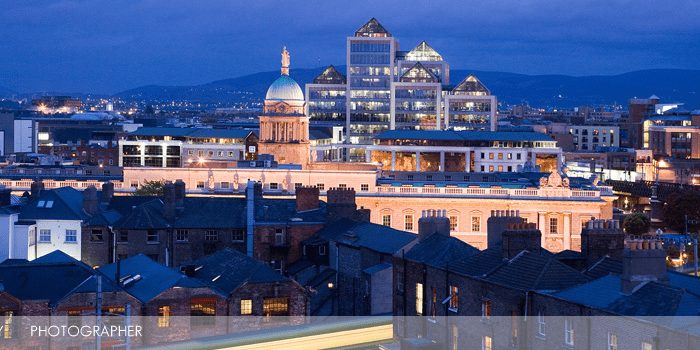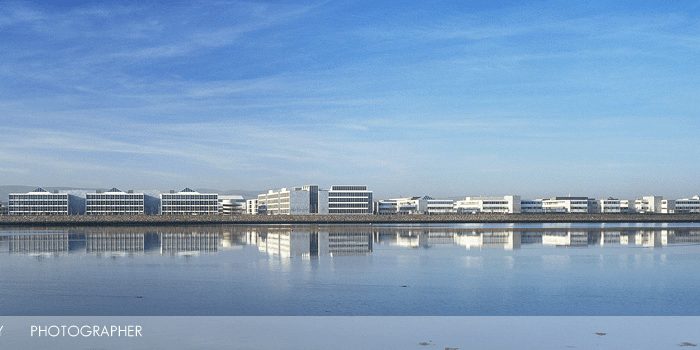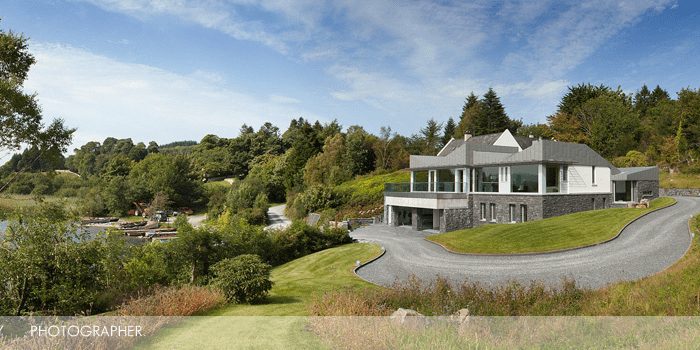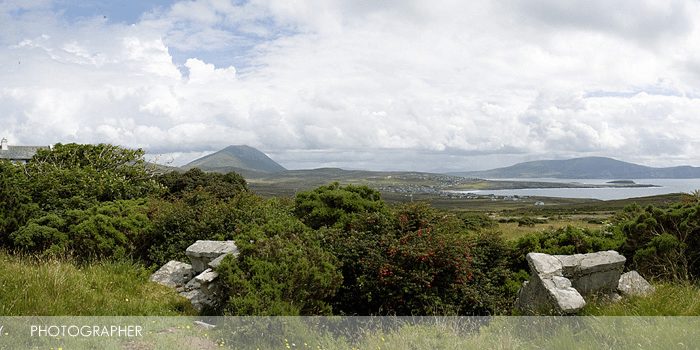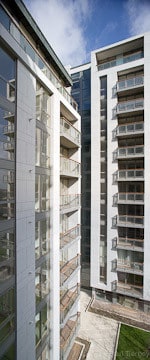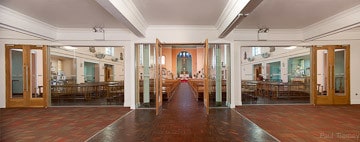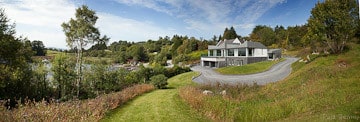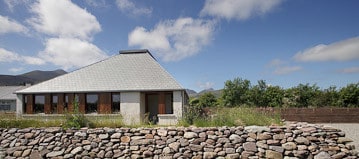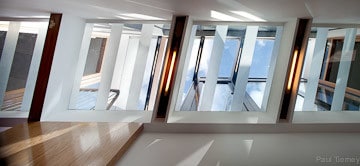Panoramic Architectural photography can provide visually appealing and informative images of a building or location. One of the examples is of the O2 arena, currently renames as the Three Arena in Dublin. The panoramic image was used to show the extend of the acoustic panels that had been installed for the client by SAS systems. Panoramic images can work well on the web or as a two or three page fold out in print. Many of the panoramic images I have produced recently were used as part of a display setting in an office.
Panoramic photography can be useful for showing the extent of a site. It can be completed in two ways. The first and most straightforward is to use a ultra-wide lens and crop a sample from that image. The advantage with this method is simplicity, it produces an image that can capture fast moving objects in one shot. The alternative method is to use a longer lens on a rotating gimble to produce a composite image. This image as the advantage of being very high resolution. However the scene has to be almost movement free or if there is movement the image should be digital adjusted so that all aspects of the image relate to each other.

